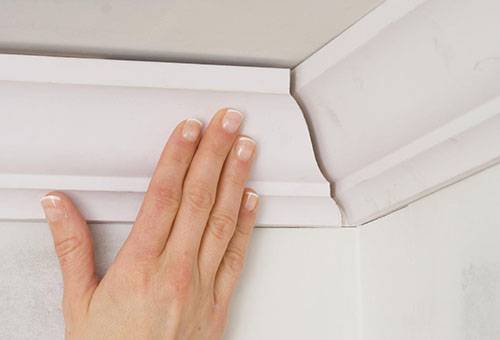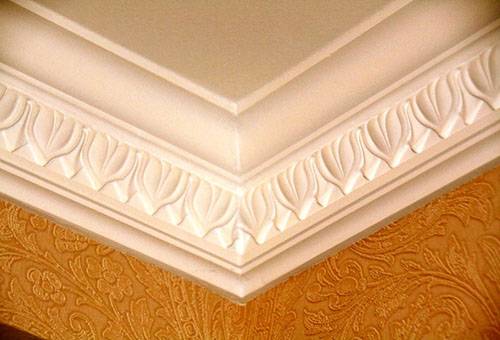How to remove cracks in glued or otherwise fixed ceiling plinths?
Home renovations are usually a significant expense, so many people try to do the work themselves whenever possible to save money. But those who carry out any type of finishing for the first time in their lives do not always achieve good quality. So, for example, after such a repair, immediately or after some time you can notice cracks in the ceiling skirting boards that have formed at the places where they join each other or with the wall. Of course, you can always tear everything down and redo it with the help of a professional, but then trying to save money will be in vain. It’s better to make efforts to fix everything, starting from what already exists.

Methods for sealing cracks in the upper baseboard in normal situations
There are several effective ways to seal a gap in the baseboard, including:
- fill the resulting space with acrylic sealant;
- cover the hole with putty;
- make an insert from a piece of plinth.
Although the actions listed in the above list seem quite simple, it is important to consider that their reasonableness will depend on the nature of the problem, the extent of its neglect and the type of technology that was used to carry out the finishing work.
When deciding which method to choose to correct defects that have arisen, you should start from the size of the cracks that need to be sealed.For example, gluing an insert cut from a plinth implies that the gap is quite large. But it is unlikely that it will be possible to produce a fragment whose shape exactly matches the space being filled. Therefore, the edges of the hole will probably have to be cleaned with a knife so that the created part fits tightly there.
It is also advisable to widen the crack if you intend to use sealant or putty. To prevent the repair material from falling off over time, you need to increase the surface area with which it will come into contact. To do this, it is best to clean the gap between the wall and the baseboard and give it a v-shape. Filling the prepared space with putty is done using a rubber spatula, which can easily remove excess material and beautifully decorate the surface of the joint being sealed. Using sealant to eliminate defects will consist of carefully squeezing it out of the bottle, distributing it in the space to be filled, and then using a plastic spatula or finger to form a smooth and even seam.
Advice
The formation of the sealant should be carried out some time after it is extruded. Therefore, in order to carry out this procedure efficiently, it is better to do a little training in advance on sealing cracks in any unnecessary objects.
Non-standard cases and ways to solve the problem
Sometimes, when installing the upper plinth, a special adhesive composition is used for joints. In a frozen state, this glue will be difficult to pick out with a knife in order to widen the crack and give it the desired shape. Typically, large cracks do not form in such material.Therefore, in this situation, it will be enough to apply a layer of Moment Installation glue to the problem area.
The reason for the formation of a gap between the wall and the baseboard is not always a violation of technological requirements during installation. The fact is that to create a decorative edging in the upper part of the walls, skirting boards can be used:
- made of polyvinyl chloride, included in the kit of parts for creating a plastic ceiling;
- made of expanded polystyrene - for walls made of plasterboard or covered with wallpaper;
- made of wood - for finishing the room with clapboard.
When the surface of the wall and ceiling is perfectly flat, then usually there are no problems when installing skirting boards and there are no cracks to speak of, especially if the work is performed by a specialist. But in old houses you can find walls whose surface curvature defies any mathematical description. Usually no one is going to spend money on leveling them. Therefore, when covering the ceiling with plastic, there will definitely be gaps of different sizes between the baseboards used as the starting profile and the wall. There is no way to remove them; you can only seal them with sealant.
Wooden plinths also sometimes need adjustment. It is known that wood tends to change its original shape under the influence of environmental factors. Therefore, even if all installation rules are followed, no one can insure themselves against the gaps that may appear between such a plinth and the wall. In this situation, it is better to use gypsum putty to solve the problem. A special wood putty is also suitable, the color of which can be selected to match the appearance of the material.If, after applying one of the methods mentioned above, it turns out that after hardening, the substance used for repair acquired a color shade different from the baseboard, then the situation can be corrected by painting. In any case, in order to eliminate defects that spoil the appearance of the room, it is not necessary to start a new renovation.
